According to the local legend, they claims that the four ancient stupas were built when the great Buddhist emperor Ashokas who expended Buddhism when he came to the valley on third century BC. This four Ashoka stupa present the ancient culture, tradition and lifestyle of Kathmandu valley. Emperor Ashoka expanded Buddhism far and wide in four corners of the Patan city also known as Lalitpur.
Legend claims that great Buddhist emperor Ashoka built four ancient stupas marking the boundaries of Patan when he visited the valley 2500 years ago. All are worth a quick visit, especially during the auspicious full moon of August when Buddhist and Tibetan pilgrims walk around all four stupas in a single day.
Above tour is design for a day walking (pilgrimage tour) especially for Buddhist pilgrimage or any who are enthusiast about ancient culture or Buddhism.
Are you interested for sightseeing and get into stunning stupa views, diverse its location, and unique pilgrimage walk? Join me.
Also like to visit Patan Durbar Square and other Viharas, do let us know!
Tentative plan of walking
Stupa 1: Meet at Patan Durbar Square, And walk to Teta Thura (Eastern Stupa)
Stupa 2: Then walk to Lagan Thura (Southern Stupa)
Stupa 3: Walk to Pucho Thura (Western Stupa), and
Stupa 4: Walk to Ibahi Thura (Northern Stupa)
Well this walking plan is design as clockwise walk however it can be done the way one wish! For the pilgrimage, it is advise to visit above plan. Our guide stay flexible.
Package details:
| DEPARTURE/RETURN LOCATION | Patan Durbar Square | |||||
| JOIN GROUP | 1 day before | |||||
| SERVICE INCLUDES |
|
|||||
| SERVICE EXCLUDES |
|
More about ‘Ashoka the Great’ – 304 to 232 BCE
Emperor Ashoka was the third emperor of the Mauryan dynasty, grandson of its founder Chandragupta and son of the second emperor, Bindusara. Ashoka also known as ‘Ashoka the Great’, was an emperor of the Maurya Dynasty, son of Bindusara, who ruled almost all of the Indian subcontinent from 268 to 232 BCE.
Upon Bindusara’s death, Ashoka and his brothers engaged in a war of succession, and Ashoka emerged victorious after several years of conflict. Considered by many to be one of India’s greatest emperors, Ashoka expanded Chandragupta’s empire to reign over territory stretching from present-day Afghanistan in the west to present-day Bangladesh in the east. It covered the entire Indian subcontinent except for parts of present-day Tamil Nadu, Karnataka, and Kerala. The empire’s capital was Pataliputra (in Magadha, present-day Patna), with provincial capitals at Takshashila (later Taxila) and Ujjain.
The Kalinga war consider as bloodiest battles in world history. The Kalinga war was between the Maurya Empire with Ashoka and the state of Kalinga, and after that war, Ashoka got upset with the bloodshed, and vowed to never fight again. And at the same time, this war is said to have prompted Ashoka to adopt Buddhism. Thus,
Ashok converted to Budhhism and he patronized Buddhism during his reign. Ashoka promoted and the spread of Buddhism across ancient Asia.
Legends about “Ashoka” the Great
Beyond the edicts of Ashoka, biographical information about him relies on legends written centuries later, such as the 2nd-century CE Ashokavadana (“Narrative of Ashoka”, a part of the Divyavadana), and in the Sri Lankan text Mahavamsa (“Great Chronicle”). The emblem of the modern Republic of India is an adaptation of the Lion Capital of Ashoka. His Sanskrit name “Aśoka” means “painless, without sorrow” (the a privativum and śoka, “pain, distress”).
In his edicts, he is referred to as Devānāmpriya (Pali Devānaṃpiya or “the Beloved of the Gods”), and Priyadarśin or Priyadarshi (Pali Piyadasī or “He who regards everyone with affection”). His fondness for a tree is the reason for his name being connected to the “Ashoka tree” or Saraca asoca, and this is referenced in the Ashokavadana.
About Ashoka visit to Kathmandu Valley, Patan
There is little evidence to support the fact that the Emperor Ashoka ever visited Kathmandu valley. However, there are four stupas supposedly built by Ashoka in 250 AD. Marking the four corners of Patan, three of these stupas are located in and around Patan, while the fourth one is near Shankamul having a beautiful concrete stupa. The four Stupas are ‘The Lagan Thura (South), the Teta Thura (East), Pucho Thura (West) and the Ibahi Thura (North)’ respectively.
It is believed that at the time these Stupas were built, Buddhism flourished in the Kathmandu Valley. These stupas are significant landmarks in Patan. These give the town of Patan an addition to its already glorified beauty. Despite not having concrete evidence, it is believed that these stupas were built up towards the end of the 4th century AD.
For booking, email your guide hello guide or call in his whatsApps or use right side of booking form show in this website.
Additional information
| Group-size | Any Size |
|---|
Stupa 1: Meet at Patan Durbar Square, And walk to Teta Thura (Eastern Stupa)
Stupa 2: Then walk to Lagan Thura (Southern Stupa)
Stupa 3: Walk to Pucho Thura (Western Stupa), and
Stupa 4: Walk to Ibahi Thura (Northern Stupa)
For booking, email your guide hello guide or call in his whatsApps or use right side of booking form show in this website.
Cost for this day trip: US$ 50 in total (for full day guiding tour).
For above tour Guide cost US$ 50 for a full day guiding fee. This price apply for small group to big group. For example if you are less than 10 pax, then you need to dive the total cost accordingly.
Please note that your tour starting point is from Patan Durbar Square and you will end this tour at the Patan Durbar Square, however it will not include Patan Durbar Square sightseeing as if you includes then there will be no enough time for visiting these 4 Stupas. Short briefing about Patan Durbar Square can be given our guide as introduction. Well, if you wish to includes also Patan Durbar Square and these 4 Stupas, then definitely you have to drive all the 4 places except the northern stupa which is nearby the Patan durbar square.
By walking (if you are good walker), it will take about 4 hours to visit all this places.
This price does not includes any transportation or taxi if you wish to drive. It is guided walking tour and if you wish to take car or taxi, that will cost extra. During the this tour, you will visit some extra places and Vihars, on the way, which is along the tour is included and our guide will no compromise showing you around!

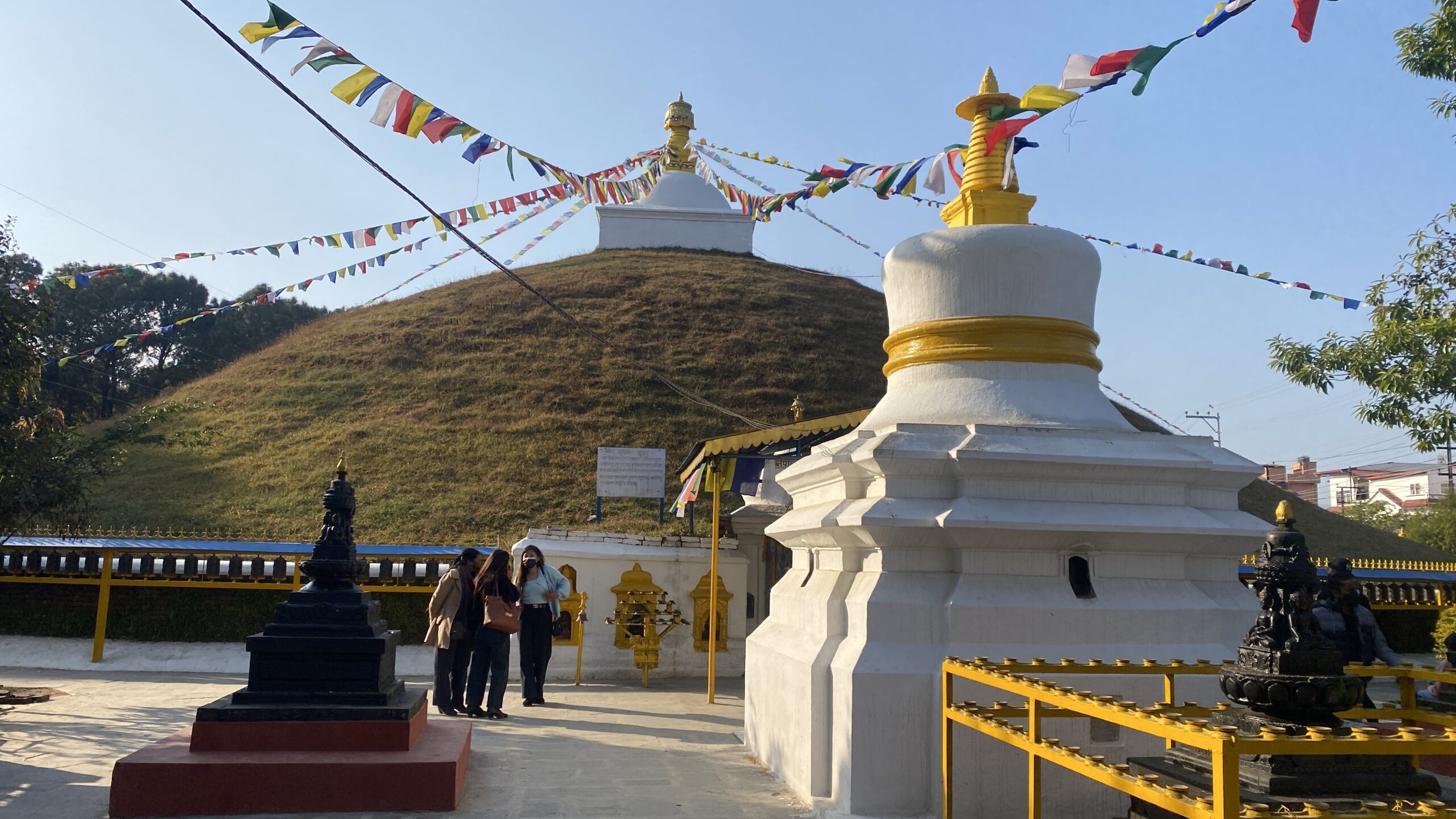
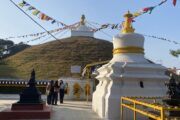
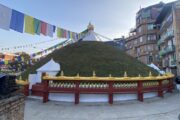
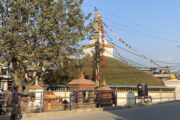
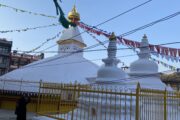
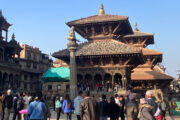
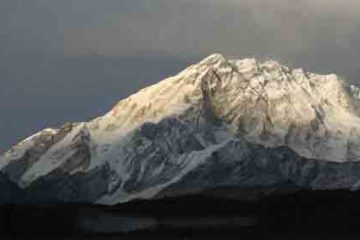
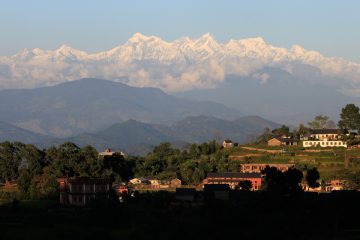
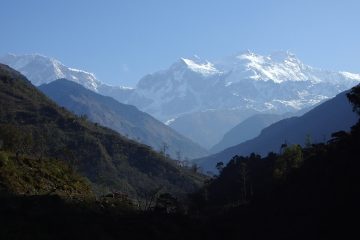
Tour Reviews
There are no reviews yet.
Leave a Review